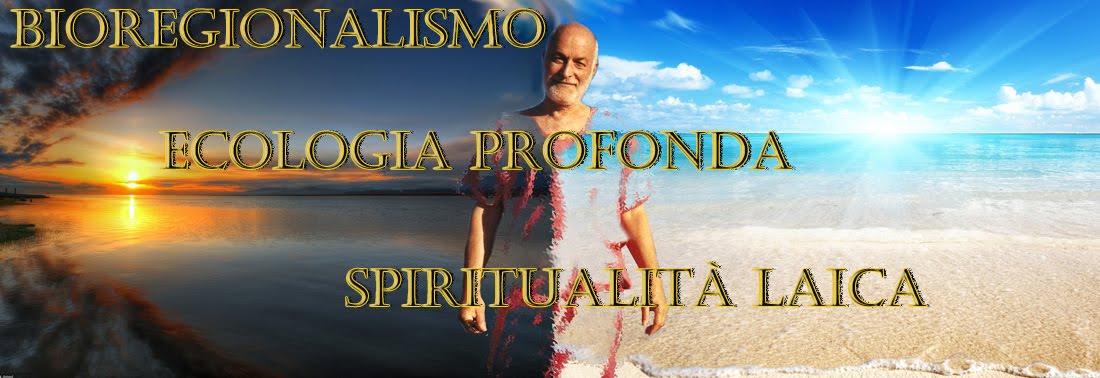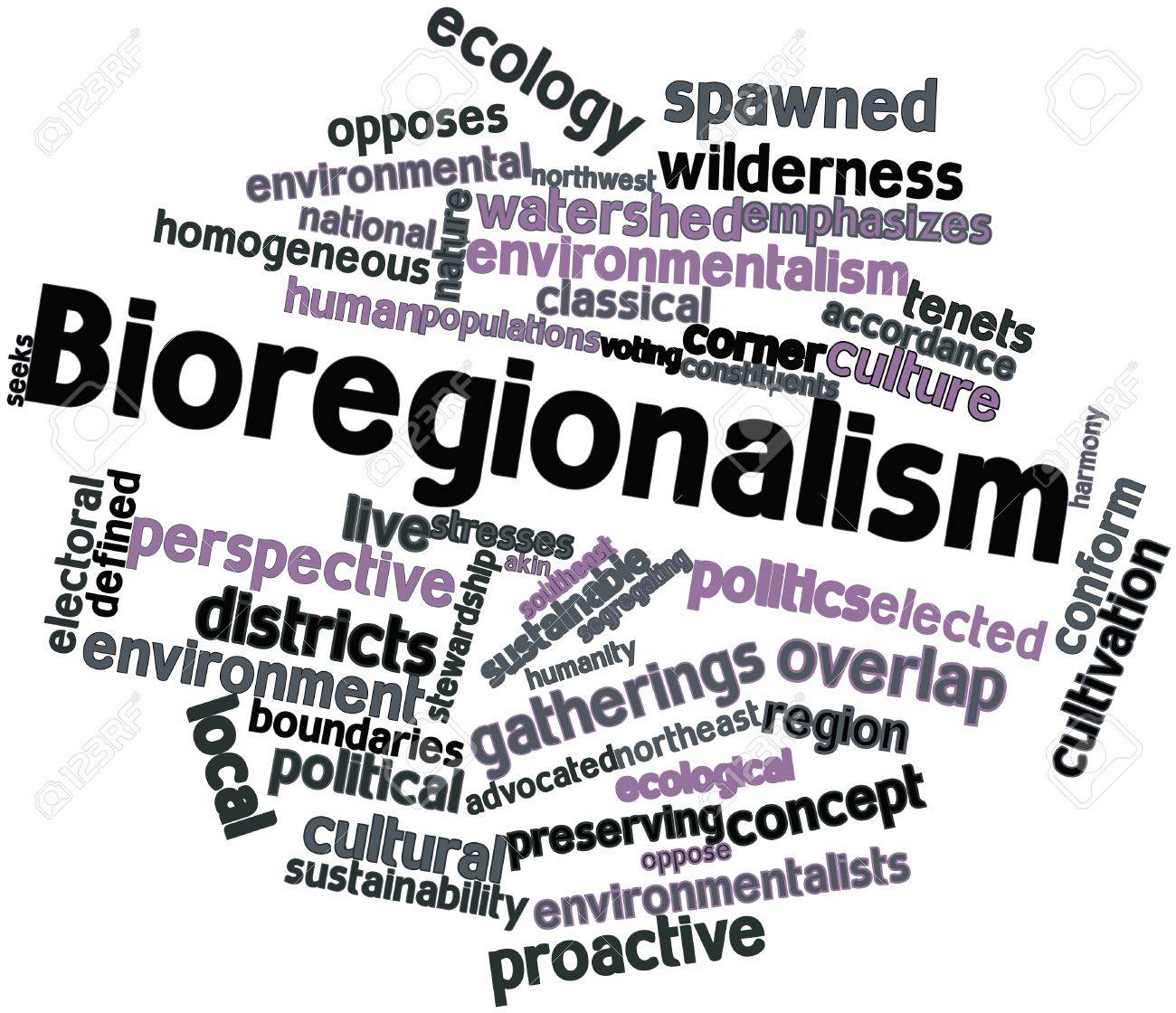"I learned silence from talkative people, tolerance from the intolerant and kindness from rude men. Should I not feel gratitude towards these teachers?" (Khalil Gibran)
Wishing to embrace in a single context the concept of spirit and life, as presumably occurred during the Gilanic period, a time when there was solidarity, civil commitment, awareness of the environment, of fatigue and of dangers but at the same time carefree, and wishing to bring that unified experience back into our daily life, I found myself having to decide which word could best indicate that thought.
During an exchange of letters with his bioregionalist friend Stefano Panzarasa, a convinced matrist, he suggested using the term "religiosity of nature", as prompt by the philosopher Thomas Berry.
The word itself is very evocative of a re-junction with the natural soul.
At the same time the meaning of religion (from the Latin religio) is "re-unite" but we can not say that life has never had separations in itself .. If it had suffered a separation it would no longer be life. In fact in the matristic period death was also considered a phase in the life process. So talking about the religion of nature can be misleading. Since in nature it is already a united whole, a unicum.
I would prefer to use the word "biospirituality", an ancient and new neologism to describe what has always been and will always be ....
Sometimes, it seems that words are born to create discord among men. The incomprehension born with the diversity of languages, wanting to understand the other through language, is the basis of the antipathies that human beings perceive towards others... Try it is the negro who talks to us in Bantu is seen with suspicion and fear, put that the same Negro starts to speak in Italian, or even in our family dialect, here he suddenly becomes one of us, a brother of color different. This truth I have been able to experiment several times in Calcata where the ethnic community is very varied, however, because we all spoke the same way, at most with a slight foreign accent (among other things each of us had a slight accent of origin being all strangers), here we were all however calcatii, independently if Sicels, Romans, Venetians, European East West, North North Americans, Africans, etc. etc.
The common language unites and at the beginning all the humans spoke the same language, the "nostratic idiom" is called in glottology, then from that root, in the planetary human diaspora, branches and twigs have risen more and more different. The mythology of the Tower of Babel is symbolic but truthful. Men who had just saved themselves from the flood instead of going to re-inhabit the planet, once again fertile after the cataclysm, all concentrated in one place and began to erect a monument of thanksgiving to God (perhaps at that time it was the Goddess), symbolically this zig-rual tower rose more and more in height (to get to heaven) but man is made for the earth and so God (or Goddess) confused the languages .. and the men who could not understand each other moved away in homogeneous groups to the conquest of the world ... who here who there, who up and who down, until the whole planet was inhabited.
Of course this is a fable but it makes us think how the difference of languages drives man from man. Is this why in every age an emerging power tries to settle through a language? Surely it happened like this ... Sanskrit, Greek, Latin ... and now English, as temporary vehicular languages, is proof of this.
But wait wait, I did not mean to do a linguistic semantic discourse, on the contrary, I wanted to talk about the only element that is able to unite and to make man recognize himself and others as a manifestation of the same vital matrix. This element is the "consciousness-intelligence", which unites all living beings and - in latency - even the inorganic world.
This consciousness / intelligence has been defined from time immemorial "spirit" (different from soul that implies an individual personality). The spirit all unites us and the "secular spirituality" is the syncretic understanding that each participates in the spirit. Spirit and life are consequential and inseparable. Therefore the spirit can never become the prerogative of any religion, since religions are created by and for souls, for people who consider themselves separate. For this reason I often define true spirituality as "secular" (from the ancient meaning of the Greek "laikos" outside any social and religious context).
This term, "lay spirituality", does not please many ... or some try to explain it in their own way, as a form of para-religious creed, the "secular spiritualists" profess the Masons, the Christians who lead secular life, the adherents to the new new-age religions, etc. While others, completely contrary to the concept of "spirit", deny that any spirituality can exist in any form. In short, to clarify and definitively establish the indissolubility between spirit and matter, it occurred to me to explain this lay spirituality as "biospirituality", so that they may all be happy and content, knowing that life and spirit are the same thing .
And what is meant by biospirituality? It means that the highest achievement is obtained here and now, not somewhere else or at some other time. We are not in it every moment of existence. The Supreme Reality is not in an elsewhere and apart from this existence. The Earth, the Universe are impregnated.
Biospirituality is the expression, the subtle odor, the intrinsic message, which transpires from the whole matter.
The feeling of constant undivided presence .. the awareness of the inseparability of life, recognizable in all its forms and components, starting from the perceiving "subject", this is the stable practice of being biospiritual. Supreme knowledge means knowing that everything that "is" is as such. Because the existing is one, there can not be "other" ...
And indeed, the obstacle posed by religions is precisely that of imagining an "other" state to be obtained, superior or inferior, different from the one present. But when the ignorant darkening is removed from the human heart, we suddenly find ourselves at home. We can define this state "liberation" from the illusory sense of separation, since biospirituality can not admit separation but only diversity in the expressive and external forms.
At the right time each of us will feel the impulse to recognize ourselves in what is and has always been ... and this is the purpose of biospirituality. And it is a way to go towards the new eco-eco era desired by Thomas Berry.
Paolo D'Arpini
 Testo italiano
Testo italiano
“Ho imparato il silenzio dalle persone loquaci, la tolleranza dagli intolleranti e la gentilezza dagli uomini scortesi. Non dovrei provare gratitudine verso questi insegnanti?” (Khalil Gibran)
Volendo abbracciare in un unico contesto il concetto di spirito e di vita, come presumibilmente avveniva durante il periodo gilanico, un tempo in cui c’era solidarietà, impegno civile, coscienza dell’ambiente, della fatica e dei pericoli ma allo stesso tempo spensieratezza, e desiderando riportare quella esperienza unitaria nella nostra vita quotidiana mi sono ritrovato a dover decidere quale parola potesse maggiormente indicare quel pensiero.
Durante uno scambio epistolare con l’amico bioregionalista Stefano Panzarasa, matrista convinto, lui ha suggerito di usare il termine “religiosità della natura”, come proposto dal filosofo Thomas Berry.
La parola in se stessa è molto evocativa di un ri-congiungimento con l’anima naturale.
Allo stesso tempo il significato di religione (dal latino religio) è “ri-unire” ma non si può affermare che la vita abbia mai avuto separazioni in se stessa.. Se avesse subito una separazione non sarebbe più vita.. Infatti nel periodo matristico anche la morte era considerata una fase nel processo vitale. Quindi parlare di religione della natura può essere fuorviante. Poiché in natura è già un tutto unito, un unicum.
Preferirei magari usare la parola “biospiritualità”, neologismo antico e nuovo per descrivere ciò che è sempre stato e sempre sarà….
A volte, sembra che le parole nascono per creare discordia fra gli uomini….. L’incomprensione sorta con la diversità dei linguaggi, volendo comprendere l’altro attraverso il linguaggio, è alla base delle antipatie che gli esseri umani percepiscono gli uni verso gli altri… Prova ne sia il negro che ci parla in bantu viene visto con sospetto e timore, mettete che lo stesso negro si mette a parlare in italiano, o addirittura nel nostro dialetto familiare, ecco che improvvisamente diviene uno di noi, un fratello di colore diverso. Questa verità l’ho potuta sperimentare svariate volte a Calcata dove la comunità etnica è molto variegata però siccome parlavamo tutti allo stesso modo, al massimo con un leggero accento straniero (tra l’altro ognuno di noi aveva un leggero accento d’origine essendo tutti forestieri), ecco che diventavamo comunque tutti calcatesi, indipendentemente se siculi, romani, veneti, europei est ovest, americani nord sud, africani, etc. etc.
Il linguaggio comune unisce ed all’inizio tutti gli umani parlavano la stessa lingua, il “nostratico” viene chiamato in glottologia, poi da quella radice, nella diaspora umana planetaria, sono sorti rami e ramoscelli sempre più diversi. La mitologia della torre di Babele è simbolica ma veritiera. Gli uomini appena salvatisi dal diluvio universale invece che andare a ri-abitare il pianeta, ridiventato fertile dopo il cataclisma, si concentrarono tutti in un luogo e cominciarono ad erigere un monumento di ringraziamento a Dio (forse però a quel tempo era la Dea), simbolicamente questa torre zigurratica saliva sempre più in altezza (per arrivare in cielo) ma l’uomo è fatto per la terra e così Dio (o la Dea) confuse i linguaggi.. e gli uomini che non potevano più comprendersi si allontanarono in gruppi omogenei alla conquista del mondo.. chi qua chi là, chi su e chi giù, finché tutto il pianeta fu abitato.
Certo questa è una favola ma fa pensare come la differenza delle lingue allontani l’uomo dall’uomo. Sarà per questo che in ogni epoca un potere emergente cerca di stabilirsi attraverso una lingua? Sicuramente è avvenuto così.. il sanscrito, il greco, il latino… ed ora l’inglese, come lingue veicolari temporali, ne sono riprova.
Ma aspetta aspetta, non intendevo fare un discorso semantico linguistico, anzi, volevo parlare dell’unico elemento che è in grado di unire e di far riconoscere l’uomo in se stesso e agli altri come manifestazione della stessa matrice vitale. Questo elemento è la “coscienza-intelligenza”, che unisce tutti i viventi e -in latenza- anche il mondo inorganico.
Questa coscienza/intelligenza è stata definita da tempo immemorabile “spirito” (diverso da anima che sottintende una personalità individuale). Lo spirito tutti ci accomuna e la “spiritualità laica” è la comprensione sincretica che ognuno compartecipa allo spirito. Spirito e vita sono consequenziali ed inseparabili. Perciò lo spirito non può divenire mai appannaggio di alcuna religione, poiché le religioni sono create da e per le anime, per le persone che si considerano separate. Per tale ragione spesso definisco la vera spiritualità come “laica” (dall’antico significato del greco “laikos” al di fuori di ogni contesto sociale e religioso).
Questo termine, spiritualità laica, non piace a molti.. oppure alcuni cercano di spiegarla a modo loro, come una forma di credo para-religioso, si professano “spiritualisti laici” i massoni, i cristiani che conducono vita secolare, gli aderente alle nuove religioni new-age, etc. Mentre altri, completamente contrari al concetto di “spirito” negano che possa esistere una qualsiasi spiritualità in qualsivoglia forma.
Insomma, per fare chiarezza e definitivamente sancire l’indissolubilità tra spirito e materia, mi è venuto in mente di spiegare questa spiritualità laica come “biospiritualità”, in modo che così siano tutti felici e contenti, sapendo che vita e spirito sono la stessa cosa.
E cosa si intende per biospiritualità? Vuol dire che il più alto ottenimento si ottiene qui ed ora, non in qualche altro luogo od in qualche altro tempo. Non siamo in in esso ogni momento dell’esistenza. La Realtà Suprema non è in un altrove ed a parte da questa esistenza. La Terra, l’Universo ne sono impregnati.
Biospiritualità è l’espressione, l’odore sottile, il messaggio intrinseco, che traspira dalla materia tutta.
Il sentimento di costante presenza indivisa.. la consapevolezza dell’inscindibilità della vita, riconoscibile in ogni sua forma e componente, partendo dal “soggetto” percepiente, questa è la pratica stabile dell’essere biospirituale. La conoscenza suprema significa sapere che tutto quel che “è” lo è in quanto tale. Perché l’esistente è uno, non può esserci “altro”…
Ed infatti l’ostacolo posto dalle religioni è proprio quello di immaginare uno stato “altro” da ottenere, superiore od inferiore che sia, diverso da quello presente. Ma allorché l’ignorante oscuramento viene rimosso dal cuore dell’uomo, improvvisamente ci troviamo a Casa. Possiamo definire questo stato “liberazione” dall’illusorio senso di separazione, poiché la biospiritualità non può ammettere separazione ma solo diversità nei modi espressivi e nelle forme esteriori.
Al momento opportuno ognuno di noi sentirà l’impulso a riconoscersi in quel che è ed è sempre stato.. e questo è lo scopo della biospiritualità. Ed è un modo per andare verso la nuova era ecozoica auspicata da Thomas Berry.
















